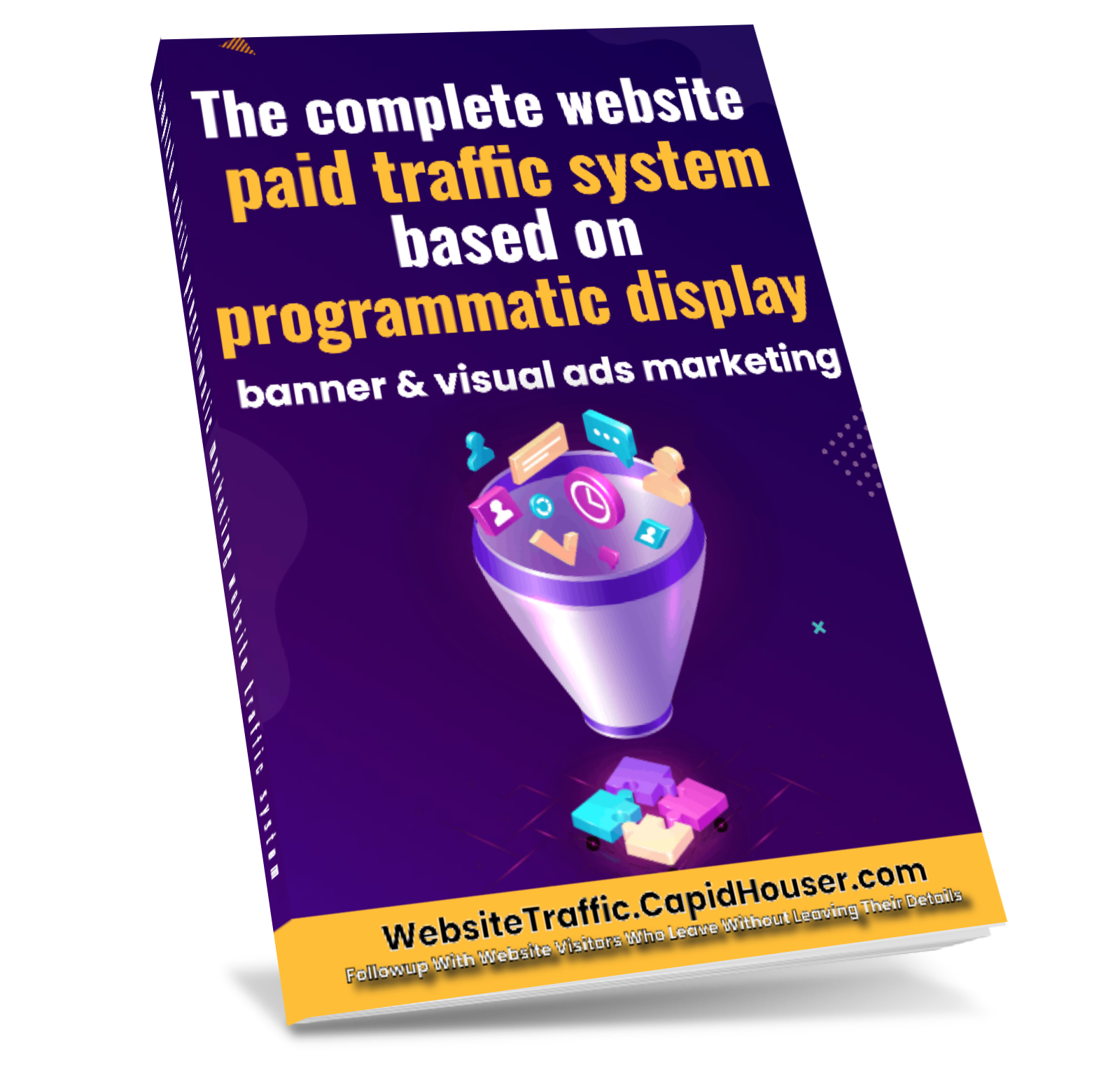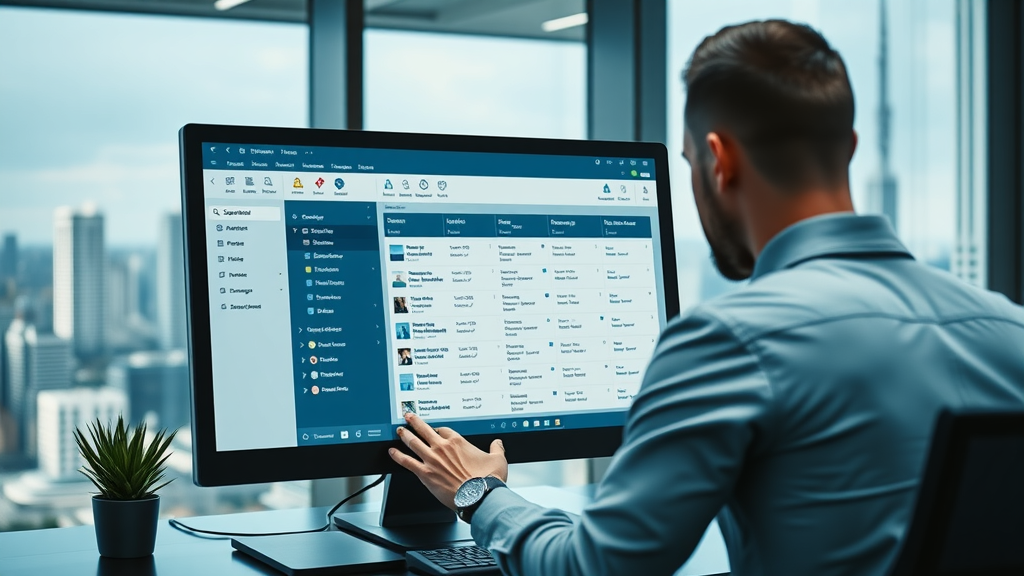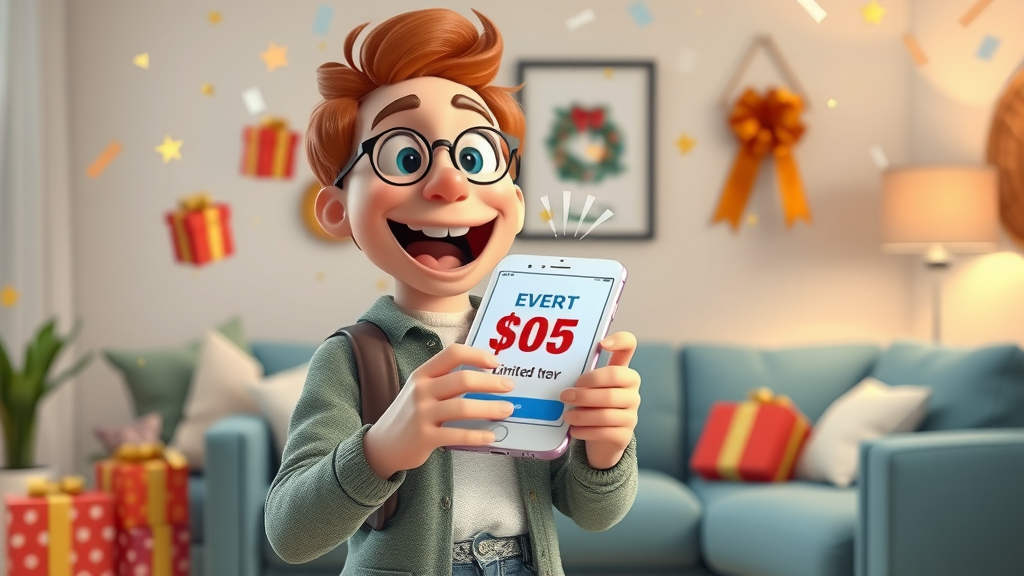Did you know that up to 98% of first-time visitors leave a website without purchasing — but nearly 70% of those can be re-engaged successfully with the right strategies?
Why Learning How to Market to Customers After They Have Left Business Website Matters
Understand how to reconnect with past customers and existing customers to drive repeat sales
Learn actionable tactics and the psychology behind customer retention and loyalty programs
Discover top-performing retargeting and email marketing approaches after a customer leaves your website
Analyse case studies on successful strategies and avoid common mistakes
If you've ever wondered why your marketing campaign isn't turning past customers into loyal advocates or why existing customers aren't coming back as often as you'd hope, you're not alone. The majority of business owners face this challenge: nearly everyone visits your website, but only a handful convert on their first visit. However, understanding how to market to customers after they have left your business website can transform your customer retention strategy. By applying the right re-engagement tools, loyalty programs, and customer experience tactics, you can win back past customers and boost sales.
Modern customer behaviour proves that focusing on existing customers and the customer base you already have is often more effective than continuously chasing new customers. From tailored email marketing to exclusive offers, the following sections reveal everything you need to know to get started—and make sure past customers are keen on coming back for more.
Understanding the Journey: When Customers Leave Your Business Website
The path a customer takes on your business website is rarely linear. While many may express initial interest in your products or services, the journey is often interrupted for myriad reasons. Some potential buyers could be comparing prices, searching for reviews, or simply not ready to make a decision. Identifying what prompts a visitor to exit without converting is the first step to ensuring your re-engagement strategy is on target. Recognising drop-off points such as complicated checkout processes, slow loading pages, or insufficient product information allows you to address these pain points and improve the overall customer experience.
In practice, this means consistently monitoring key analytics and customer journey maps. Are customers abandoning their carts? Do they visit your website and leave after only one page? By measuring these data points, you can pinpoint obstacles that past customers face and implement effective ways to encourage them to return. Ultimately, refining each touchpoint can mean the difference between a one-time visitor and a loyal, repeat customer .
The Psychology Behind Why Past Customers Don’t Convert Immediately
Very few customers buy from a business website on their first visit. This delay can be attributed to buyer hesitancy, lack of immediate need, or the desire to compare a product or service among competitors. Research shows that trust plays a major role: until a customer feels confident in your offer and perceives value, they may hesitate to make a purchase.

Another relevant psychological factor is decision fatigue . Prospective and past customers are bombarded with choices online, making many reluctant to commit, especially if your website doesn’t immediately communicate benefits. When you address these psychological roadblocks by providing reassurance through reviews, detailed FAQs, and satisfaction guarantees, you make it easier for both new and lapsed customers to take the next step.
For many past customers, another key element is feeling remembered and valued . Personalisation and genuine follow-up after they leave your business website can be an effective way to make customers feel seen, thereby increasing their chances of coming back and making a purchase.
Identifying Triggers That Lead Customers to Exit
Understanding exactly why past customers and new ones leave your business website is crucial to improving conversion rates. Common triggers include a complicated purchasing process, unexpected shipping fees, slow website speed, lack of trust signals, or poor mobile experience . Such issues can stop both the first-time visitor and the returning past customer from completing their purchase.
Increasingly, businesses are leveraging heat mapping tools and exit-intent pop-ups to collect real-time data on where and why users exit. For example, if visitors consistently leave during the checkout phase, consider simplifying forms and offering guest checkout. Similarly, if exit rates spike after a visitor reads your returns policy, revisit the language and terms to make sure they align with the expectations of your target audience.
Regularly seeking feedback from lapsed and existing customers by offering surveys or incentives gives you a direct line into what’s driving people away. Not only does this improve the customer experience, but it shows your commitment to continuous improvement—a trait that past customers appreciate.
Re-Engagement Strategies: How to Market to Customers After They Have Left Business Website
Retargeting Campaigns for Past and Existing Customers
Retargeting is an effective way to keep your brand in front of bounced traffic after they leave your business website . This strategy works by placing retargeting pixels on your site, so when customers visit your website but don’t convert, you can display relevant ads to them on social media, Google, or other platforms.

For existing customers , retargeting isn’t just about getting a second sale—it’s about nurturing the customer relationship and keeping your offerings top-of-mind. For past customers who haven’t purchased in a while, reminders about new features, limited-time offers, or an update to your loyalty program can prompt them to return. For the best results, segment your retargeting audiences based on previous behaviours—such as category views, cart additions, or previous purchases—to deliver personalised ads that speak to individual needs.
Remarketing Tactics: Email, SMS, and Social Media Ads
While retargeting focuses on web display and social media ads, remarketing leverages direct communication via email and SMS . Remarketing is the process of reaching out to past customers and existing customers who interacted with your products or services but didn’t complete their journey, using highly personalised content.
Email marketing remains a top performer for bringing lapsed customers back. Abandoned cart emails, post-purchase follow-ups, and special offers tailored to past purchase behaviour all drive engagement. SMS campaigns offer immediacy and higher open rates, ideal for limited-time deals.
On social media, remarketing ads can show tailored messages and product recommendations, often leading to greater trust and connection with your customer base. The key is to make sure every message is relevant, valuable, and timed right —making it more likely that your past customer will become a returning loyal fan.
Segmenting Your Customer Base for More Effective Follow-Ups
Segmentation is the cornerstone of effective customer retention. By dividing your customer base into smaller, targeted groups based on behaviour, demographics, or stage within the sales funnel, you can tailor your outreach to maximise impact.
For example, past customers who only purchased once might benefit from loyalty program invitations or welcome-back discounts. Existing customers who regularly engage but haven’t shopped in the last three months could be prompted with reminders about new features or upcoming promotions. Segmentation enhances the relevancy of your marketing campaign, boosting open rates, click-through, and overall satisfaction.
To get started, leverage your customer relationship management (CRM) system or email marketing platform to categorise your contacts. Use filters such as purchase frequency, average order value, or product interests. When customers feel you understand their needs, it increases the likelihood of them coming back and strengthens your competitive edge against other brands.
Personalisation: Why Custom Content Wins Back Existing Customers
Today’s buyers expect more than just generic messages. Personalisation is a powerful way to make existing customers and past customers feel valued and understood. Whether through product recommendations based on past purchases or content addressing specific pain points, personalised messaging demonstrates you value their business.
Customised emails with the customer’s name, reminders about incomplete purchases, or birthday rewards can drive re-engagement. For social media ads, showcasing new features of a product they viewed previously boosts click-through rates. Even SMS campaigns can be tailored using purchase dates or feedback requests.
Ultimately, a successful personalisation strategy transforms a one-time visitor into a brand advocate. When customers know that you remember their preferences and cater to them, they’re far more likely to keep coming back—and recommend your business to friends and family.
Comparison of Re-Engagement Tools | |||
Tool |
Strengths |
Best For |
Drawbacks |
|---|---|---|---|
Email Marketing |
Personalisation, automation, cost-effective |
Lapsed customers, targeted promotions |
Spam filters, open rates can vary |
Retargeting Ads |
Broad reach, visual reminders, scalable |
Website visitors, brand awareness |
Ad fatigue, potential high costs |
Loyalty Program Platforms |
Incentivise repeat purchases, customer retention |
Existing customers, high-value segments |
Setup complexity, ongoing management |
Using Customer Retention Methods to Win Back Past Customers
Building a Loyalty Program That Brings Customers Back

One of the smartest moves any business can make for customer retention is to create a loyalty program that rewards, surprises, and delights. Loyalty programs keep past customers engaged by offering points, discounts, or exclusive access to new products or services. By providing tangible incentives for repeat behaviour, you make sure existing customers have a compelling reason to come back.
The key is to make the program easy to understand and accessible—complicated systems deter usage. Promote your loyalty program via your business website, email marketing, and social media to make sure all segments of your customer base are aware of the benefits.
Many successful programs gamify the experience, leveraging “VIP” statuses or tiered rewards to encourage sustained engagement and referrals to friends and family. Integrating feedback mechanisms—such as bonus points for reviews—further strengthens the customer relationship.
Providing Outstanding Customer Service to Stand Out

Customer service remains a powerful differentiator for retaining existing and past customers. Quick, knowledgeable, and empathetic responses build trust and make customers feel that their issues matter. When a customer leaves your business website, a prompt follow-up by your support team can often prevent churn.
Outstanding service also means anticipating needs—offering self-help resources, clear instructions, and proactive product updates. Businesses that exceed expectations in service are remembered and recommended, leading to increased word-of-mouth and long-term customer acquisition.
Train your support teams in cross-selling and up-selling, ensuring every interaction focuses on customer success rather than just transactional problem-solving. When customers realise that your brand genuinely cares for their satisfaction, they're much more likely to become lifelong advocates, tipping the scales in your favour over competitors.
Best Practices for Following Up With Past Customers
Effective follow-up is a blend of persistence and respect. Too many messages risk annoying the customer, while too few may cause your business to be forgotten. Start by segmenting your database and using behaviour-based triggers: send an abandoned cart email a day after a missed purchase and a win-back incentive if there's been no activity for 30 days.
Personalise each communication and ensure each message provides value. Use surveys to request feedback from lapsed customers, or offer exclusive previews of new features to entice their return. Remember to make the next steps simple and frictionless—always include clear calls-to-action and direct links to limited-time offers or loyalty benefits.
Test your timing and frequency to see what works best for your unique audience. Monitor your open and click-through rates, and adjust your strategies accordingly. This data-driven approach ensures every contact with past customers feels inviting rather than intrusive.
"Your existing customer base is 50% more likely to try new products and spends 31% more compared to new ones." - Marketing Metrics
Driving Value Through Email Marketing After Customers Visit Your Website
Success Templates: Abandoned Cart, Win-Back, and Feedback Request Emails
Well-crafted email templates have the power to recover abandoned carts, win back dormant past customers, and collect valuable feedback to improve the customer experience. For abandoned carts, use persuasive copy, product images, and urgency to remind the customer of what they’re missing.
Win-back emails should be warm, direct, and possibly include a special offer (“We’ve missed you!”). Feedback requests show that you value customer opinions and can reveal pain points, especially when sent shortly after purchase or site exit.
Make use of personalisation—starting each message with the customer’s name and referencing previous purchases makes customers feel remembered. Use A/B testing to refine your templates and ensure you’re always delivering the most effective way to communicate with each segment in your customer base.
Timing Your Emails After the Customer Leaves Your Website
The timing of your follow-up email marketing is as important as the message itself. Send abandoned cart reminders within 1–2 hours of the visitor leaving, as this is when interest is still high. For win-back emails, experiment with intervals—7, 14, or 30 days—to see which timing results in the most returns.
Don’t bombard your list; instead, test and track the ideal cadence for your specific audience. Holidays or special events related to your products or services are also excellent opportunities for targeted outreach. Always monitor unsubscribe and engagement rates to ensure you’re providing value rather than creating email fatigue.
Integrating automation tools lets you scale these efforts, making sure every customer receives the right message at the right time, boosting the chances they’ll come back and convert.
Top-Performing Email Subject Lines for Re-Engagement | ||
Subject Line |
Engagement Focus |
Use Case |
|---|---|---|
“Forgot Something? Your Cart Awaits 🎁” |
Abandoned Cart |
Win Back |
“We Miss You! Here’s 10% Off Your Next Purchase” |
Lapsed Customer |
Emotionally Driven Return |
“Take Our 2-Minute Survey & Get Rewarded” |
Feedback Collection |
Service Improvement |
“Exclusive Preview: New Products Just For You” |
Product Launch |
Existing Customer Engagement |
“Limited-Time Offer: Come Back for More Savings” |
Urgency, FOMO |
Seasonal/Flash Sales |

Engaging Past Customers With New Features and Irresistible Offers
Alerting Returning and Past Customers About New Features
Rolling out new features or improvements to your products or services? Your existing customer base should be first to know. Announcing new features via targeted email marketing, website banners, or direct SMS gives past customers a compelling reason to revisit your business website.
Explain how these enhancements benefit them, and consider inviting feedback or early access sign-ups. When past customers feel included in the evolution of your offerings, it fosters loyalty and makes them more likely to share the news with friends and family.
For big updates, create walkthrough videos or live webinars to demonstrate value, answer common questions, and reinforce the customer relationship. Proactive communication about new features helps turn one-time purchasers into repeat buyers.
Creating Promotions Specifically for Existing Customers

Rewarding your loyal base pays off. Consider launching exclusive deals just for past customers or those in your loyalty program. Special “come back” coupons, sneak peeks at new products, or bonus point events make customers feel appreciated.
These offers don’t have to be massive to be meaningful—a free gift with a repeat order, anniversary discounts, or first access to a seasonal sale can all be effective ways to say thank you.
Promote these deals via personalised emails, your website, and social media. Not only do they provide strong incentive to return, but they also encourage cross-selling and increase average order value, boosting your overall customer retention.
Leveraging FOMO: Limited-Time Deals After a Visit to Your Website
FOMO—Fear of Missing Out—drives action. After a visitor leaves your business website, send a targeted message presenting a time-sensitive offer (“Only 24 hours left!” or “Exclusive deal ends tonight!”). This sense of urgency can tip the scale for customers who were on the fence.
Combine this approach with clear visuals, like countdown timers in emails or prominent banners on your retargeting ads. Use language that reminds past customers of how your products or services solve real problems or add value to their lives.
FOMO is especially powerful when combined with personalised recommendations and loyalty incentives. When implemented thoughtfully, these campaigns make sure past customers don’t just visit your website—they come back, again and again.
Offer first-purchase discounts for returning/lapsed customers
Anniversary or birthday rewards for loyalty program members
Free shipping or expedited delivery for limited periods
Early access to new products or services
“Refer a Friend” bonuses to encourage word-of-mouth
This video features three successful brands detailing their digital customer retention strategies. Watch how real marketing experts use email marketing, retargeting, and loyalty programs to reduce churn, engage their customer base more effectively, and create a lasting impact. Data-driven storytelling and user testimonials provide valuable takeaways for businesses of any size.
Case Study Insights: Reducing Customer Churn with Digital Engagement
The most successful brands don’t just hope customers will come back—they have systems in place that make it likely. Common themes in these case studies include using marketing campaign automation to contact past customers at critical points, initiating targeted offers based on behaviour, and providing incentives through loyalty programs that reward sustained engagement.
Digital engagement also involves continuous improvement: tracking open rates, click-throughs, and churn metrics to optimise each campaign. Brands that act on customer feedback and rapidly implement changes demonstrate that they value their existing customers, making the customer experience central to all business decisions.
These real-world examples prove that a robust, data-informed re-engagement strategy delivers tangible results in higher retention, more repeat sales, and greater brand advocacy.
Retargeting pixels are small but mighty tools that allow businesses to continue marketing to visitors after they’ve left your website. This video explains, step-by-step, how to install retargeting pixels, create segmented audiences, and design ads that convert—from first-time visitors to past customers who haven’t been back in months.
See how brands integrate retargeting into broader marketing campaigns, combining data insights with creative messaging for a seamless customer experience—online and off.
People Also Ask
How can you market your business online without a website?
Answer: Utilise platforms like social media, online directories, Google My Business, and partner with influencers or list your offerings on marketplaces to connect with your customer base even if you don’t have a business website.
How do you encourage customers to come back?
Answer: Offer attractive loyalty programs, exclusive discounts, and personalised follow-ups using customer data and feedback. Provide new features and excellent customer service to show tangible value to your existing customers and past customers.
How to market your new website?
Answer: Announce via email marketing campaigns, leverage social media teasers, utilise retargeting ads, and encourage your customer base to engage with new content, promotions, or loyalty program options tailored for both existing and new ones.
How do you tell your customers you’re going out of business?
Answer: Communicate transparently through multiple channels — send sincere email updates, post announcements on your business website and social pages, and offer last-chance deals or loyalty program conversions for remaining credits or rewards for past customers.
Frequently Asked Questions on How to Market to Customers After They Have Left Business Website
What are the best tools for retargeting past customers?
The most effective retargeting tools include Facebook and Instagram Ads Manager, Google Ads (Display Network), AdRoll, and Criteo. These platforms allow you to create tailored ads for your audience segments—ensuring your marketing campaign reaches the right past customers at the right time. Email marketing platforms like Mailchimp and Klaviyo also offer integration with social retargeting.
How often should you follow up with existing customers who left your business website?
Follow-up frequency depends on your industry and audience, but generally, send an initial reminder within 24 hours, a follow-up a few days later, and periodic check-ins (such as monthly newsletters or loyalty program updates). Always monitor engagement rates so your approach remains welcome and not intrusive for your existing customer base.
How do loyalty programs support customer retention strategies?
Loyalty programs incentivise repeat purchases, encourage larger order values, and foster long-term relationships with existing customers. They keep past customers engaged by offering rewards, exclusive offers, and personalised incentives—making it an effective way to drive sustained customer retention.
What metrics show successful re-engagement of past customers?
Key metrics include return customer rate, average order value from returning visitors, open/click rates on re-engagement emails, redemption rates of loyalty program offers, and decreases in churn or attrition. Consistently tracking these data points helps refine your re-engagement strategy for maximum impact and sales growth.
Actionable Next Steps for Marketing to Customers After They Leave Your Business Website
Segment your customer base for tailored messaging
Integrate retargeting pixels on your business website
Create loyalty programs and exclusive offers for returning customers
Automate personalised email marketing for different stages of the customer journey

Get Expert Help: Drive Results with a Retargeting & Remarketing Strategy
Contact us at https://www.capidhouser.com/paid-website-traffic/ to discuss your Retargeting & Remarketing strategy
Take action today : segment your audience, implement retargeting, launch a loyalty program, and automate email touchpoints for sustainable customer retention and win-back success.
To effectively re-engage customers who have left your website, consider implementing strategies that address their reasons for leaving and provide compelling incentives to return.
1. Implement Retargeting Campaigns
Retargeting ads serve as gentle reminders to visitors who left your site without making a purchase. By displaying personalized ads on platforms they frequent, you can reignite their interest. For instance, dynamic retargeting ads can showcase products they viewed, increasing the likelihood of conversion. ( thecmo.com )
2. Personalize Email Remarketing Efforts
Sending personalized emails to past visitors can effectively draw them back. Crafting compelling subject lines and offering exclusive discounts tailored to their interests can make your emails stand out. For example, a subject line like “We Miss You! Here’s 20% Off Your Next Purchase” can entice recipients to revisit your site. ( gocustomer.ai )
3. Offer Incentives and Promotions
Providing relevant and valuable incentives can motivate former customers to return. Time-sensitive offers, such as limited-time discounts or exclusive deals, create a sense of urgency. Ensuring these promotions align with the customer’s past behavior increases their effectiveness. ( thecmo.com )
4. Develop a Loyalty Program
Implementing a loyalty program rewards repeat customers and encourages continued engagement. Offering points, discounts, or exclusive access to new products can foster a sense of appreciation and commitment. For example, tiered loyalty programs that provide escalating rewards can incentivize ongoing purchases. ( zendesk.com )
5. Enhance Customer Service and Engagement
Proactively reaching out to past customers to gather feedback demonstrates that you value their opinions and are committed to improvement. Personalized follow-ups, such as surveys or invitations to join customer advisory boards, can re-establish connections and show genuine interest in their experiences. ( martech.org )
By integrating these strategies, you can effectively re-engage customers who have left your website, turning them into loyal advocates for your brand.
 Add Row
Add Row  Add
Add 




Write A Comment